When my course came in the post I was about to go to China so I was able to pass a long flight reading the course on my iPad. This project scared me to death so I decided to start on the trip and carry on always.
Before I even picked up my camera I thought long and hard about how I could survive this without arrest or worse a public lynching by an angry mob. I decided the following.
People are more relaxed at leisure. They are more interesting in groups. My preferred camera is too conspicuous so use a smaller one. Henri Cartier Bresson said “They (Surrealists) saw that ordinary photographs, especially when uprooted from their practical functions, contain a wealth of unintended, unpredictable meanings.”.(1).
I worried until I read Alec Soth, “My own awkwardness comforts people”.(2) I related to this statement as I set out on my project I felt awkward. I have followed Henri Cartier-Bresson when he said “look for geometry and it will all fall into place”. (3).
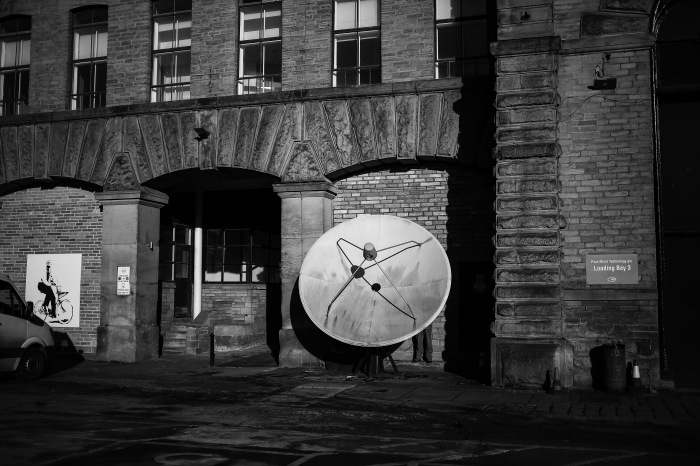
1. Smoke Break.
I saw this scene and thought it showed promise. I set up my camera and waited. A man came out lit a cigarette and hid behind the satellite dish. A true decisive moment.
F8 ISO100 1/500s.
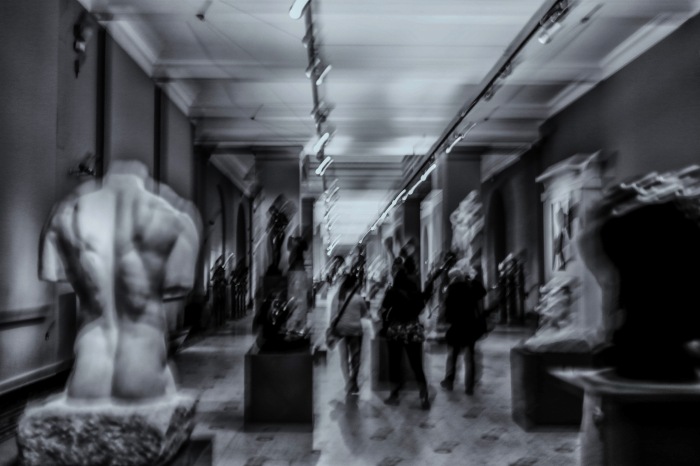
2. V&A Gallery
I liked the movement in Paul Strands work. I wanted to try myself. I put my camera on manual. Slow shutter was used I waited until people were in the composition and pressed the shutter. F4.0 ISO 100 1/60th Second.
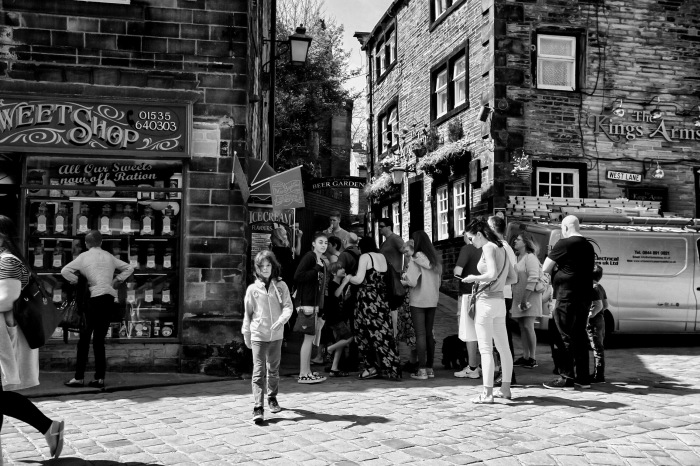
3. “They Do Vanilla”.
I noticed the contrast here. My nephew was talking to his auntie about seeing what flavors the parlor sold. He went to see, he was fed up as the queue was building up. I waited and caught the emotion/determination on his face he said “they do Vanilla!”.F2.8 ISO100 1/500
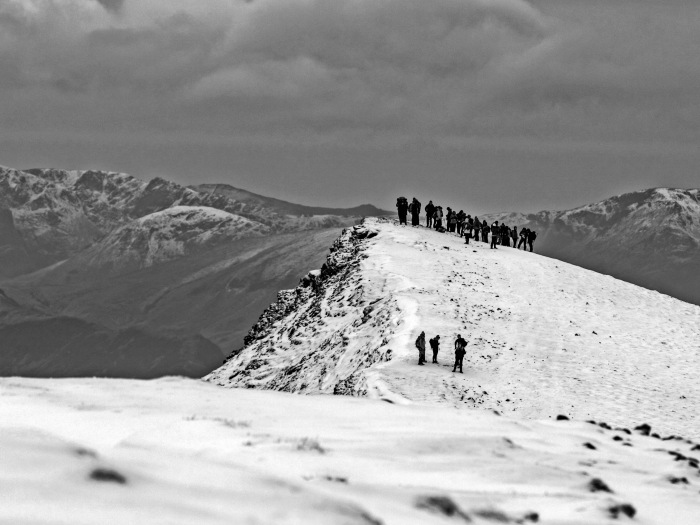
4. Aint no Mountain High enough.
On a walk I spoke with a group of people who were all divorced. They support one another in their recovery. I heard one singing “Ain’t no mountain high enough” (4). I saw them again approaching the summit and lined up the shot of them proving what they had sung, capturing them living the lyric. F4 ISO100 1/1000.
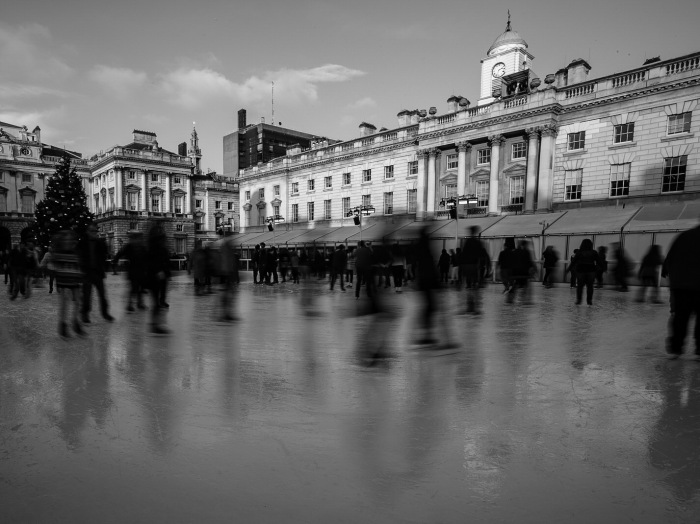
5. Skaters at Somerset House.
Watching the skaters waiting for my turn I saw the light on Somerset House. I hoped to capture the building in sharp relief and the skaters in movement. I rested my camera on railings propping up the lens with pennies to align to the scene. F8 ISO80 1/60
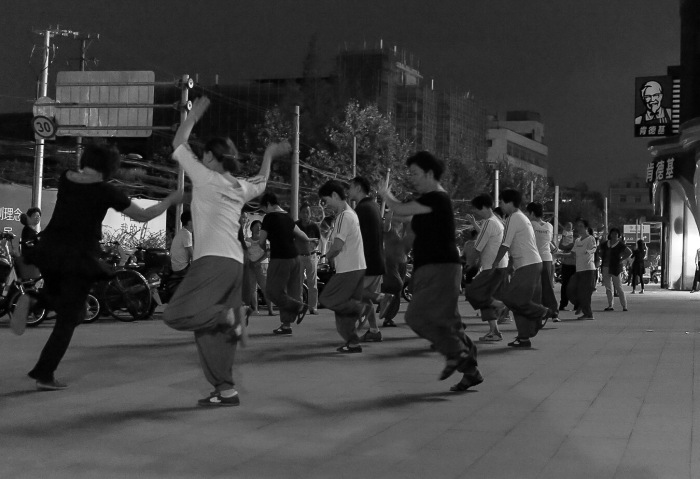
6. KFC Dancers.
In Shanghai I heard that people danced every evening outside a supermarket. I arrived early and took a lot of shots to get the exposure correct as the light was difficult. Sure enough the ladies arrived and danced. I like the movement in this shot and the shapes in the arms. This part of the dance lots of arm movement and flowing clothing. So I waited until that part of the music repeated and exposed on high speed. This was the best shot. F4 ISO200 1/500.
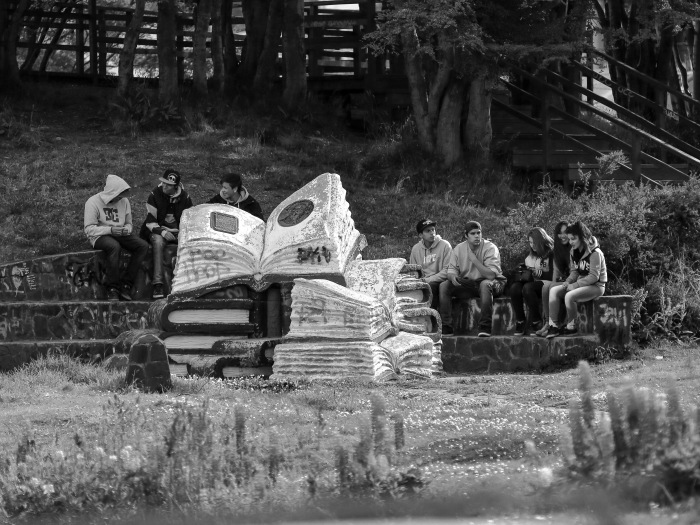
7. Schools Out
I saw a sculpture of a pile of books as I arrived at a hotel in Ushuaia. I went to take photos close up. As I walked away a group of people went and sat behind the books. I liked the juxtaposition of the kids ignoring the statue to a priest who fought to get books for this prison town. Argentina placed prisoners at the end of the world in Patagonia. He wanted them to have a chance to reform through reading. The local kids meet here and produce art in the form of graffiti. I am sure the priest would be pleased to see such freedom of expression. F5.6 ISO100 1/1000.
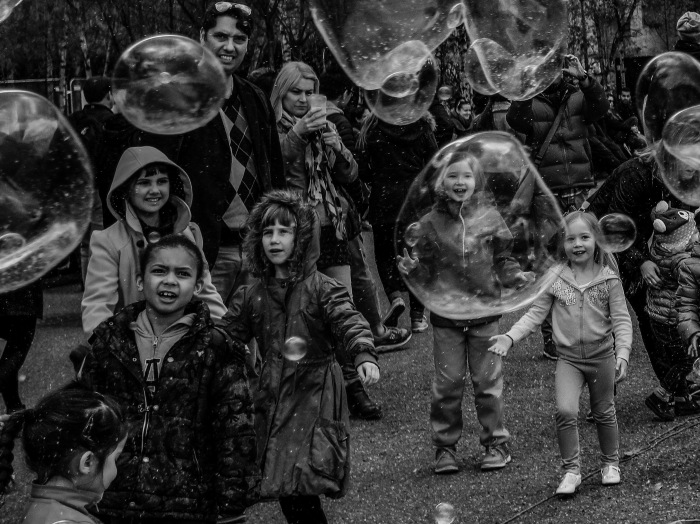
8. Girl in a bubble.
There are bubble makers by the Tate Modern. I wanted to capture a child bursting a bubble. I rejected this shot but each time I returned to it I enjoyed the fact the girl had been caught in a bubble. This is much more of a moment and less cliched than bursting the bubble.
F4 ISO100 1/2000.
What matters is to look!
In l Armour tout court, the video opens with red light processing an exposure and moves into Henri Cartier-Bresson (5) talking about his early life. He talks briefly about his fathers feelings about one exposure of dogs in the street and his sisters viewing it in the bathroom. He then talks about seeing. “People don’t see they just press the button” doesn’t sound like someone who leaves things to luck.
Henri Cartier-Bresson followed two principles. Compose the Scene looking for interesting geometry and shapes wait for action and people adding interest to the shot. He was prepared to change if something happens to add interest to the shot.
In the course work he describes how he couldn’t see when he captured the man leaping. He would have been very lucky to get this in one shot just by pointing and pressing. I would be surprised if a man who produced so many great shots relied on luck.
Zohar Ghazzal (6) said “whilst any body could be photographed in a decisive moment. Henri Cartier-Bresson photography is at its best with bodies and Gestures”.
This project has helped grow my confidence, no-one mobbed me and no one told me to stop.
References
(1) Galassi, P. and Cartier-Bresson, H. (1987). Henri Cartier-Bresson. New York: Museum of Modern Art.
(2) Sheets, H. (2009). Trolling for strangers. New York Times, [online] p.AR18. Available at: http://www.nytimes.com/2009/08/02/arts/design/02shee.html?_r=0.
(3) Galassi, P. and Cartier-Bresson, H. (1987). Henri Cartier-Bresson. New York: Museum of Modern Art.
(4) Simpson, A. (1966). Ain’t No Mountain High Enough. [Radio] Hits ills USA Detroit Michigan USA.: Tamla.
(5) Galassi, P. and Cartier-Bresson, H. (1987). Henri Cartier-Bresson. New York: Museum of Modern Art.
(6) Zouhairghazzal.com. (2016). decisive moments. [online] Available at: http://zouhairghazzal.com/photos/aleppo/cartier-bresson.htm [Accessed 3 Jul. 2016].
Mentioned in caption of photo 2. Strand, P. (1915). Wall Street. [Photogravure & Platinum Print Photograph] Philadelphia: Philadelphia Museum of Art.



















